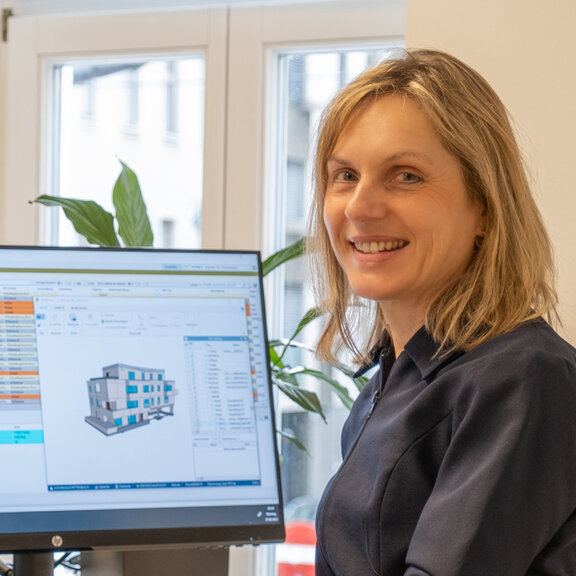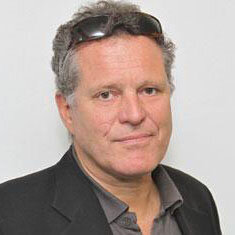BIM interview series part 3
A key factor for ensuring the successful deployment of building information modelling (BIM) is high-quality, verified and standardised data – and the secure handling of this data.
We asked the experts from Working Group 011 09 "Technical drawing and documentation in the construction industry" about which measurable, positive results BIM produces and what role BIM standards play.
The discussion was held with:
- Azra Dudakovic, BIM Expert and CEO, SIDE GmbH
- Monika Ilg, Managing Director, ib-data GmbH
- Peter Kompolschek, Managing Director, Kompolschek Architecture Office | Chair of Committee 011 "General building construction"
- Stefan Pölzl, BIM and IT Coordinator, ASFINAG Bau Management GmbH
The benefits of BIM are various
Austrian Standards: What measurable, positive results does BIM produce?
Stefan Pölzl: Cost and deadline stability increase significantly because a large number of details can be taken into account, right from the start of the planning phase. There were also fewer questions from bidders during our BIM pilot projects. A big additional benefit is also the transparent working from both sides and the consequently improved communication in the project.
Monika Ilg: If we effectively use, continue to use and build upon data which we have only had to enter once with BIM, BIM offers great potential savings because you can focus on the essential.
Azra Dudakovic: A big additional benefit is the improved insight into projects. I believe that BIM is an enormous help when it comes to truly informed decision-making, meaning decisions can be made earlier in the project. Collaboration is better supported on the contractor side.
Our sector is extremely specialised. Each project participant has a part they have to take care of. Up to now, little attention was paid to what the next party in the chain needs to be able to complete their work more quickly or better. I believe that BIM helps people to increase their understanding of others in the project and therefore means that higher productivity can be expected. I have certainly already experienced this in several projects.
Peter Kompolschek: The higher the level of quality during planning and development, the more additional benefit it offers. The costs can also be much better checked for plausibility using BIM, so we also need control mechanisms. However, the projects overall are becoming continually better thanks to BIM – and this is noticeable.
Transparency and shared data requires security
Austrian Standards: Are there still voices opposing BIM, for example those who are sceptical of the new project processes?
Stefan Pölzl: There are always opposing voices. Sometimes this was because certain project partners did not want to share their data because they were scared that it could then be sent to their competitors afterwards. This turned into something positive thanks to the further development of the software and the open BIM exchange format.
Monika Ilg: It's not as if companies have to make information transparent with BIM that hasn't already been made transparent without BIM. There are always people who do not necessarily support this trend towards digitalisation, but I do not believe that it is the issue of transparency that is responsible for this. However, the trustworthiness of data is extremely important. It must be ensured that data from external sources is actually robust in order to be able to build upon it – ideally with testing software.
Peter Kompolschek: I think there was the misunderstanding at the beginning that BIM would make all information publicly visible. However, most people have now realised that there are tools, comparable to a filter, which I can use to precisely determine who has access to the relevant data. For example, you can save your own calculation in the BIM model, but it still remains private and is not automatically shared with everyone.
The "alliance model" with shared risk demands a whole new level of transparency. BIM is probably one of the most essential tools for this. In Austria, where lots of large and small companies work on a building project, we have to bring all data exchange questions into a liability system. These are uncertainties which we have to work on.
However, for clients and builders, BIM is almost a part of daily business.
Is CEO of BIM consulting company SIDE GmbH, where she advises and supports customers when it comes to the strategic and operational implementation of construction information technologies. She started her journey towards digitalising the construction sector at STRABAG AG, where she helped play a part in BIM developments for five years. Before she moved to Vienna, she coordinated research projects at the Institute for Architecture at the University of Sarajevo and also worked in architecture planning.

Is Managing Director of ib-data GmbH, producer of ABK construction software. She has been Chair of the ÖNORM A 2063-1 and 2 working group since 2018 and is involved in additional standardisation bodies on the topics of BIM, tendering, costing, invoicing and cost management (ÖNORM B 2061, ÖNORM A 6241-2, ÖNORM B 1801-1).

Qualified architectural engineer from TU Graz, has had his own architecture office since 2000, teacher at the FH Joanneum in revitalisation, project management and life cycle from 2011 to 2018. Developed a BIM curriculum there, various consulting jobs for BIM-related tasks both domestically and abroad. Numerous residential and healthcare buildings, including revitalising the oldest part of LKH Villach hospital. European BIM Group – Austria Delegate since 2014.

Has worked as an expert BIM and IT coordinator since February 2021. His duties include advancing the BIM agendas, supporting BIM projects, optimising the construction process by means of digitalisation aspects and creating and providing centralised, networked and end-to-end data in ASFINAG. He is also a member of working groups (Austrian Standards, ÖIAV, ÖBV, FSV, etc.) on the topics of BIM and digitalisation.



